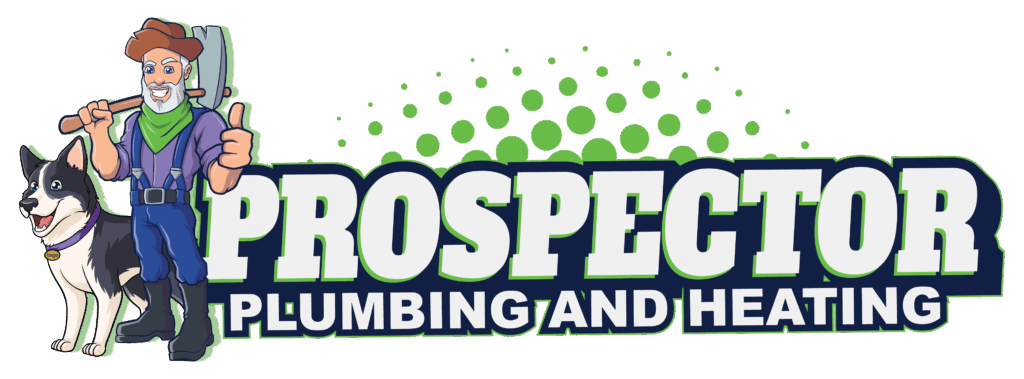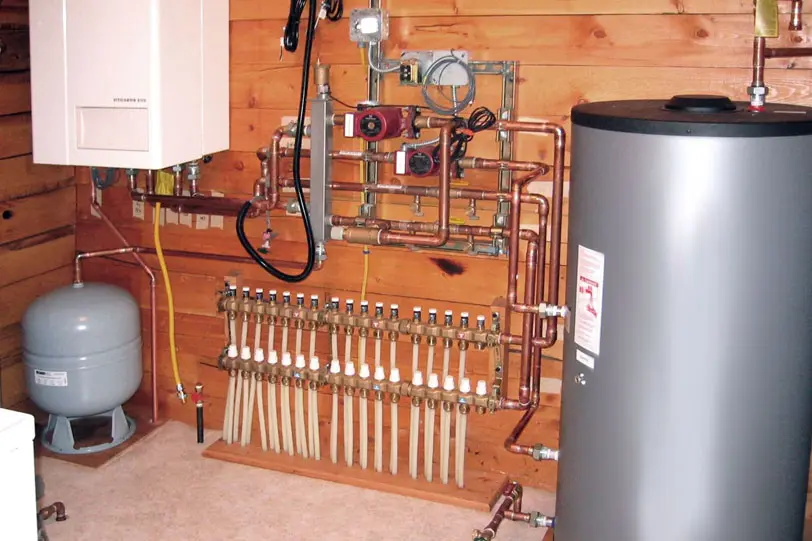Hydronic Heating Zones: How Zone Valves Work & Why They Matter
In Alaskan homes, where winter temperatures can stay below zero for weeks at a time, having a reliable and efficient heating system is critical. Hydronic heating — using hot water to heat your home — is one of the most effective and comfortable ways to stay warm. But just having a boiler isn’t enough. To really get the most out of your system, zoning is key. At Prospector Plumbing & Heating, we design zoned hydronic systems that let you control heat where and when you need it.
What is a Heating Zone?
A “zone” in a hydronic heating system is a specific area of the house that can be heated independently. Zones might include different floors, wings of the home, or even individual rooms. Each zone has its own thermostat and control valve, allowing it to operate separately from the rest of the system.
For example, you might keep the main living areas warm during the day, but let the bedrooms stay cooler until nighttime. Or heat a home office during work hours while leaving unused areas unheated. That’s zoning in action.
How Zone Valves Work
At the heart of every zoned system are zone valves. These are electrically controlled valves that open or close to allow hot water to flow into a specific zone. Here’s how the system works:
1. A room or area reaches a temperature below the set thermostat level.
2. The thermostat signals the zone valve to open.
3. The open valve allows hot water from the boiler to flow through pipes into the baseboard or radiant system in that zone.
4. Once the set temperature is reached, the thermostat signals the valve to close, stopping the flow of water.
Most modern systems use 2-wire or 3-wire zone valves, with brands like Taco and Honeywell being common in Fairbanks-area homes.
Circulators vs. Zone Valves
In some systems, instead of using zone valves, multiple circulator pumps are used — one for each zone. Both setups have their pros and cons:
– Zone valves with a single circulator are more cost-effective and simpler for smaller homes.
– Multiple circulators offer quieter operation and better performance in larger homes with long pipe runs.
At Prospector, we evaluate your home’s size, layout, and future needs to recommend the best zoning method.
Why Zoning Matters in Alaska
Alaskan homes face unique heating challenges. Temperatures can swing dramatically in different parts of a home — especially in multi-level houses or homes with additions and basements. Without zoning, you’re either overheating some areas or freezing in others. Zoning allows for:
– Fuel savings: Don’t waste fuel heating unused areas.
– Even comfort: Target cold spots and adjust for sun exposure or insulation differences.
– Custom schedules: Heat rooms only when you’re using them.
– Reduced wear on equipment: Your boiler doesn’t need to run full blast 24/7.
This level of control is especially important for homes with older construction, partial renovations, or mixed-use spaces like garages or rental units.
Thermostats & Smart Controls
Every zone has its own thermostat — and when paired with smart thermostats, zoning gets even more powerful. You can control each area from your phone, set custom schedules, and track usage. We often install Wi-Fi enabled thermostats that give homeowners full control no matter where they are.
Common Zoning Setups We Install
Some typical zoning configurations we design in Fairbanks include:
– Upstairs vs. downstairs zones
– Bedroom wing, living area, and basement
– Rental units with separate zones for tenant comfort
– Garages, shops, or additions as standalone zones
Whether you’re building new or upgrading an existing boiler system, zoning can usually be added or improved with the right components.
Zoning Adds Real Value
Zoned hydronic systems are not only more comfortable and efficient — they also add real value to your home. Savvy buyers in Alaska know to ask about heating zones, and a well-designed system can be a big selling point.
At Prospector Plumbing & Heating, we’ve helped homeowners across the Interior get more from their heating system through proper zoning and modern controls. We’ll assess your home and help you take full control of your comfort and fuel usage.
Need Help With Zoning?
Whether you’re planning a new system or looking to improve an old one, we’re here to help. We’ll walk through your layout, identify problem areas, and design a system that keeps your whole home comfortable — without heating space you’re not using. Give us a call and let’s talk heat zones.

